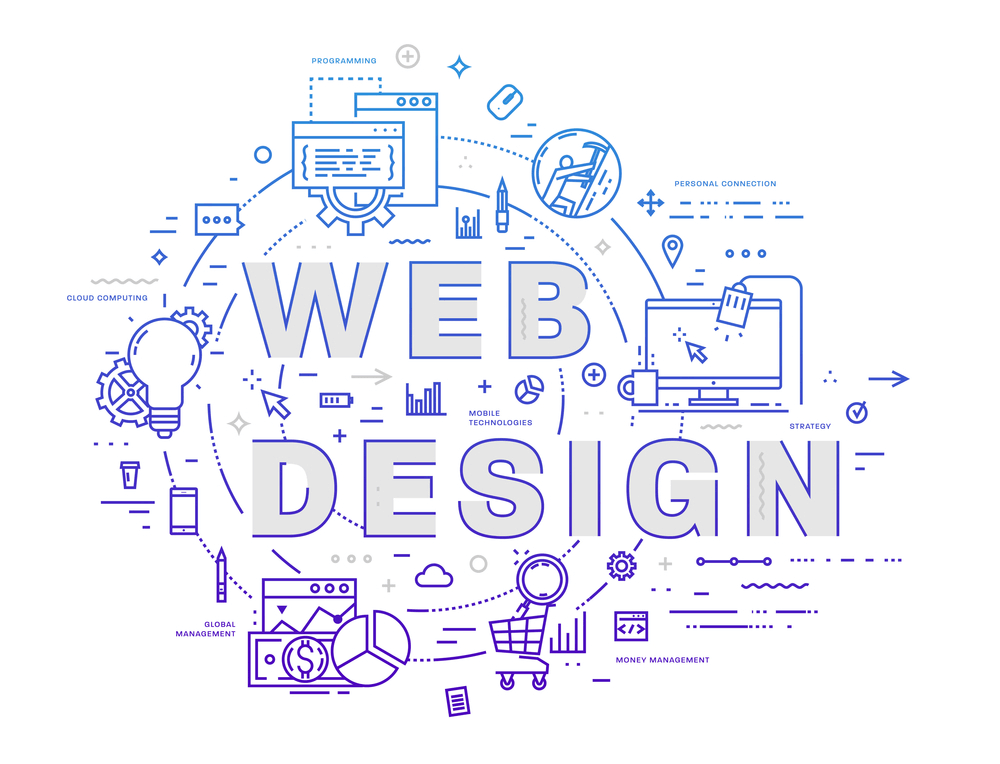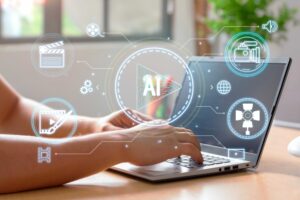Web design and web development are evolving fast, and AI is at the forefront. What used to take hours of coding and design adjustments can now be automated with smart algorithms, AI, and computer systems. In 2025, AI is not just a tool; it’s transforming how websites are built and optimized.
At Texas Web Design, we use AI-powered solutions to develop high-performing, visually appealing, and user-friendly websites. Whether you’re a business looking for a modern web presence or a developer aiming to improve workflows, AI is redefining the process. AI technologies are also significantly impacting web design and development, enhancing everything from automated processes to user engagement.
From generating code to enhancing user experiences, AI-driven tools are making websites more intuitive, engaging, and efficient. But what does this mean for businesses, developers, and designers? Let’s break it down.
Looking to future-proof your website with AI? Contact us today and let’s bring your vision to life!
AI Tools for Web Design: Beyond Standard Templates
Traditional website builders rely on templates, but AI takes things further. Instead of selecting a pre-made layout, AI-powered platforms utilize AI systems to analyze user preferences, industry trends, and functionality needs to create personalized websites.
AI systems are capable of performing tasks that traditionally require manual effort, such as layout generation and user interaction analysis.
- Automated Layout Generation: AI scans content and structures it into visually appealing layouts without manual intervention. Platforms like Wix ADI and Framer AI instantly generate responsive designs.
- Smart UI/UX Adjustments: AI tracks visitor interactions, learning which layouts, colors, and placements increase engagement. It then adapts the design in real time to improve usability.
- A/B Testing on Autopilot: Instead of manually testing different versions of a site, AI automates A/B testing, continuously refining design elements to increase conversions.
For businesses, this means faster website creation with fewer revisions. For designers, AI becomes a collaborative tool, handling repetitive tasks so they can focus on creativity.
AI and Machine Learning in Web Development: Smarter Code and Faster Builds
Web development has always required coding expertise, but AI technology is making it faster and more accessible for both experienced developers and beginners.
- AI Code Assistants: Tools like GitHub Copilot and ChatGPT Code Interpreter suggest and auto-complete code snippets based on context, reducing development time.
- No-Code & Low-Code Platforms: AI enables drag-and-drop website building with intelligent automation, allowing businesses to develop web applications without deep technical knowledge.
- Bug Detection & Auto-Fixes: AI-driven debugging tools analyze patterns in code, detecting and correcting errors before they cause issues.
AI systems integrate data and algorithms to assist in coding, making the development process more efficient and accurate. Deep neural networks play an important role in these advancements, enabling more sophisticated code generation and error detection.
While AI doesn’t replace skilled developers, it accelerates workflows, allowing them to focus on complex and custom functionalities.
AI-Driven SEO with Natural Language Processing: Smarter Strategies for Higher Rankings
SEO is evolving beyond keyword stuffing. AI research has played a crucial role in evolving SEO strategies, focusing on various techniques and goals established by researchers.

- Automated Keyword Optimization: AI tools analyze search trends and suggest high-ranking keywords based on user intent.
- Content Personalization: AI adapts website content dynamically, tailoring product recommendations, blog suggestions, and CTAs based on visitor behavior.
- Voice Search & Conversational SEO: With AI-powered voice assistants like Alexa and Google Assistant becoming more common, websites must optimize for natural language searches. AI helps structure content accordingly.
By using AI in SEO, businesses increase search visibility while providing a better user experience.
AI and Accessibility: Making Websites More Inclusive
A major shift in web development is the focus on accessibility. AI-driven tools now analyze websites to make them user-friendly for everyone, including those with disabilities.
Computer vision technologies help in identifying and describing visual elements on a webpage, making them accessible to visually impaired users. AI governance plays a crucial role in ensuring responsible AI development for accessibility.
- Automated Alt-Text & Transcriptions: AI detects images and generates accurate alt-text descriptions, improving accessibility for visually impaired users.
- Voice Navigation & Chatbots: AI-powered chatbots guide users through websites, providing real-time assistance through voice commands.
- Contrast & Readability Enhancements: AI adjusts font sizes, color contrasts, and layouts dynamically to improve readability for all users.
As more businesses prioritize accessibility, AI makes it easier to create web experiences that work for all visitors.
Generative AI-Generated Content and Dynamic User Experiences
Creating high-quality, engaging content is time-consuming. AI tools now assist with writing, editing, and even structuring blog posts, product descriptions, and landing pages, with generative AI creating new content across various media types based on user prompts.
Neural networks enable AI to generate personalized content and user experiences by analyzing complex data patterns.
- AI Copywriting & Content Generation: Tools like Jasper AI, OpenAI’s GPT-4, and ChatGPT assist in crafting engaging, SEO-friendly content that aligns with search trends and user intent.
- Personalized User Journeys: AI adapts page layouts, product recommendations, and call-to-action placements based on visitor preferences. Deep learning enhances these experiences by processing complex data and identifying patterns to improve decision-making capabilities.
- Chatbots & AI Assistants: AI chatbots handle customer inquiries, enhancing engagement and reducing response times.
This shift allows businesses to scale content marketing efforts without sacrificing quality.
The Future of AI in Web Design
AI is not replacing designers or developers—it’s expanding their capabilities through artificial intelligence. As we move through 2025, AI will continue refining automation, personalization, and accessibility in web design. Businesses that adopt AI-powered tools will gain an advantage by delivering faster, smarter, and more engaging web experiences.
For web designers, developers, and marketers, adapting to AI is essential. AI is a tool, not a substitute. AI aims to replicate human intelligence by mimicking cognitive processes such as learning, reasoning, problem-solving, and decision-making.
AI systems often mimic the structure and function of the human brain, enabling them to learn and adapt over time. Learning how to use it effectively will be the difference between staying ahead and falling behind.
At Texas Web Design, we stay ahead of AI advancements, ensuring your website remains modern, optimized, and ready for the future of digital experiences.
Want to integrate AI into your website? Call us today and let’s build something amazing!


